| کد مقاله | کد نشریه | سال انتشار | مقاله انگلیسی | نسخه تمام متن |
|---|---|---|---|---|
| 2011287 | 1067001 | 2010 | 15 صفحه PDF | دانلود رایگان |

There is evidence for ethanol-induced impairment of the dopaminergic system in the brain during development. The dopamine D2 receptor (DRD2) and the dopamine transporter (DAT) are decisively involved in dopaminergic signaling. Two splice variants of DRD2 are known, with the short one (DRD2s) representing the autoreceptor and the long one (DRD2l) the postsynaptic receptor. We searched for a model to investigate the impact of chronic ethanol exposure and withdrawal on the expression of these proteins during neuronal differentiation. RA-induced differentiation of human neuroblastoma SH-SY5Y cells seems to represent such a model. Our real-time RT-PCR, Western blot, and immunocytochemistry analyses of undifferentiated and RA-differentiated cells have demonstrated the enhanced expression of both splice variants of DRD2, with the short one being stronger enhanced than the long one under RA-treatment, and the DRD2 distribution on cell bodies and neurites under both conditions. In contrast, DAT was down-regulated by RA. The DAT is functional both in undifferentiated and RA-differentiated cells as demonstrated by [3H]dopamine uptake. Chronic ethanol exposure during differentiation for up to 4 weeks resulted in a delayed up-regulation of DRD2s. Ethanol withdrawal caused an increased expression of DRD2l and a normalization of DRD2s. Thus the DRD2s/DRD2l ratio was still disturbed. The dopamine level was increased by RA-differentiation compared to controls and was diminished under RA/ethanol treatment and ethanol withdrawal compared to RA-only treated cells. In conclusion, chronic ethanol exposure impairs differentiation-dependent adaptation of dopaminergic proteins, specifically of DRD2s. RA-differentiating SH-SY5Y cells are suited to study the impact of chronic ethanol exposure and withdrawal on expression of dopaminergic proteins during neuronal differentiation.
Journal: Pharmacological Reports - Volume 62, Issue 4, July–August 2010, Pages 649–663